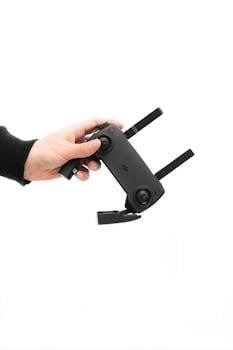
PetSafe Wireless Fence Manual⁚ A Comprehensive Guide

Welcome! This guide offers comprehensive instructions for your PetSafe Wireless Fence. From setup to training, we cover it all. Proper use ensures your pet’s safety and freedom. The manual provides essential details for models like the Stay & Play system.
Understanding the PetSafe Wireless Fence System
The PetSafe Wireless Fence System offers a safe and convenient way to contain your pet without the need for buried wires or physical fencing. This system utilizes radio frequency technology to create a circular boundary around your home, allowing your pet to roam freely within the designated area while preventing them from wandering off. The core components of the system include a transmitter, which emits a radio signal, and a receiver collar, which is worn by your pet. The transmitter plugs into a standard electrical outlet and allows you to adjust the boundary range, typically from 22 to 105 feet in all directions, creating a customizable play area for your furry friend. The receiver collar is designed to detect the radio signal emitted by the transmitter. As your pet approaches the boundary, the collar will first emit a warning tone to alert them that they are nearing the edge of the designated area. If your pet continues to advance towards the boundary, the collar will deliver a safe, static correction to discourage them from crossing the line. This correction is designed to be attention-getting but harmless, effectively teaching your pet to respect the boundaries of the system. The PetSafe Wireless Fence is suitable for pets over 5 pounds and can be used for multiple pets with the purchase of additional receiver collars. The system is portable, making it ideal for travel or temporary containment needs. It is essential to properly train your pet to the wireless fence system to ensure they understand the boundaries and avoid unnecessary corrections. Regular maintenance of the receiver collar, including battery replacement, is also crucial for the system’s effectiveness. By understanding the principles and components of the PetSafe Wireless Fence System, you can provide your pet with a safe and enjoyable outdoor experience while maintaining peace of mind.

Initial Setup and Configuration
The initial setup and configuration of your PetSafe Wireless Fence System are crucial steps to ensure the system functions correctly and provides a safe and effective containment solution for your pet. Begin by carefully unpacking all the components of the system, including the transmitter, receiver collar, boundary flags, test light tool, and any included training materials. Read the entire user manual thoroughly before proceeding with the setup process. Next, choose a suitable location for the transmitter. Ideally, this should be a central location within your home, away from large metal objects or electronic devices that could interfere with the radio signal. The transmitter should be placed at least 3 feet off the ground and plugged into a standard electrical outlet. Once the transmitter is positioned, you need to configure the boundary range. This is typically done by adjusting a dial or buttons on the transmitter. The range can usually be set from 22 to 105 feet in all directions, creating a circular boundary. Use the test light tool to verify the boundary range. Hold the test light tool near the receiver collar and walk towards the edge of the designated area. The test light should activate when the collar enters the warning zone, indicating the boundary is properly set. After configuring the boundary, it’s time to prepare the receiver collar. Ensure the collar is properly fitted on your pet’s neck, with the contact points touching their skin. You may need to trim your pet’s hair around the contact points to ensure good contact. The collar should be snug but not too tight, allowing you to easily slide a finger between the collar and your pet’s neck. Finally, insert the batteries into the receiver collar, following the instructions in the user manual. Some models may require charging the collar before initial use. Once the collar is powered on, test it again with the test light tool to confirm it is functioning correctly. By following these steps carefully, you can ensure that your PetSafe Wireless Fence System is properly set up and ready for training your pet.
Training Your Pet to the Wireless Fence
Training your pet to the PetSafe Wireless Fence is a crucial process that requires patience, consistency, and positive reinforcement. The goal is to teach your pet to recognize and respect the boundary established by the wireless fence, ensuring their safety and preventing them from leaving the designated area. Before you begin training, make sure the receiver collar is properly fitted on your pet and that the boundary range is correctly configured. Start by introducing your pet to the boundary flags. Place the flags around the perimeter of the designated area, creating a visual cue for your pet to understand the boundaries. Walk your pet around the perimeter on a leash, allowing them to sniff and investigate the flags. Use positive reinforcement, such as treats and praise, when your pet approaches the flags. The next step is to introduce your pet to the warning zone. With your pet on a leash, slowly approach the boundary flags until the receiver collar emits a warning beep. When your pet hears the beep, immediately guide them back into the safe zone and reward them with praise and a treat. Repeat this process several times, gradually increasing the distance your pet approaches the boundary flags. Once your pet understands the warning beep, you can introduce them to the static correction. Allow your pet to enter the warning zone and receive a static correction. The correction should be mild and surprising, not painful. Immediately guide your pet back into the safe zone and offer praise and a treat. Repeat this process until your pet consistently avoids the warning zone. It’s important to keep training sessions short and positive. Avoid scolding or punishing your pet, as this can create fear and anxiety. Focus on rewarding your pet for staying within the safe zone and avoiding the boundary flags. As your pet becomes more familiar with the wireless fence, you can gradually remove the leash and allow them to roam freely within the designated area. Continue to monitor your pet’s behavior and provide positive reinforcement when they stay within the boundaries. With consistent training and positive reinforcement, your pet will quickly learn to respect the wireless fence and enjoy their newfound freedom within the designated area.
Troubleshooting Common Issues

Even with careful setup and training, you might encounter issues with your PetSafe Wireless Fence. Here’s a guide to troubleshoot common problems. If your pet is escaping the boundary, first ensure the collar fits correctly. The contact points must consistently touch your pet’s skin. Trim long fur if necessary. Next, verify the boundary width is adequate. If the range is too small, your pet might accidentally wander out. Increase the radius according to the manual’s instructions. Check the transmitter’s location. Metal objects or walls can interfere with the signal. Move the transmitter to an open area, away from obstructions. A weak collar battery is a frequent culprit. Replace the battery and retest the system. If the collar isn’t beeping or providing correction, the battery is likely dead. Test the collar using the test light tool provided with the system. If the light doesn’t illuminate, the collar is faulty. Contact PetSafe customer support. Inconsistent signal strength can also cause problems. Check for interference from other electronic devices. Cordless phones, Wi-Fi routers, and other wireless devices can disrupt the fence signal. Try moving these devices away from the transmitter. If your pet is hesitant to enter the yard, they may have associated the boundary with negative experiences. Reintroduce the training flags and use positive reinforcement to rebuild their confidence. Make sure the static correction level isn’t too high. Start with the lowest setting and gradually increase it only if necessary. A properly trained pet should respond to the warning beep alone. If problems persist, consult the PetSafe website or contact their customer service. Many online resources, including FAQs and video tutorials, can provide additional assistance. Remember to always consult your specific PetSafe Wireless Fence manual for detailed instructions and troubleshooting tips specific to your model (e.g., PIF00-12917 or PIF-300). Regularly inspect the system components to ensure they are in good working order. With careful troubleshooting, you can keep your PetSafe Wireless Fence functioning effectively and keep your pet safe.
Extending or Adjusting the Boundary Range
The PetSafe Wireless Fence system’s ability to adjust the boundary range is a key feature, allowing you to customize the containment area to your specific yard and pet’s needs. Extending or adjusting the boundary range is simple. Locate the boundary control knob or buttons on the transmitter unit. Refer to your specific PetSafe Wireless Fence manual (e.g., PIF-300 or Stay & Play models) for precise instructions, as the interface may vary slightly. To increase the boundary range, turn the control knob clockwise or press the “+” button. Each increment typically corresponds to a few additional feet of coverage. Be mindful of the maximum range specified in your manual, usually around 90 to 105 feet in radius. Avoid exceeding this limit. To decrease the boundary range, turn the control knob counterclockwise or press the “-” button. This reduces the containment area, which might be necessary if you have a smaller yard or want to keep your pet away from specific areas, like a garden. After adjusting the range, always test the new boundary. Walk the perimeter with the receiver collar to ensure it activates at the desired distance. Use the test light tool to confirm the collar is functioning correctly and providing a correction signal. Pay attention to any areas where the signal may be weak or inconsistent. Obstructions like metal sheds or dense foliage can interfere with the radio signal. If you encounter such spots, consider relocating the transmitter to a higher or more central location. When extending the boundary, make sure your pet is familiar with the new limits. Reinforce the training with boundary flags and positive reinforcement. This helps them understand the expanded area and avoid accidental escapes. If you have multiple pets using the system, ensure that the adjusted range is suitable for all of them. Some pets may require a larger area than others. Be aware that terrain and environmental conditions can affect the signal range. Hills, valleys, and even weather patterns can influence the signal’s propagation. Regularly monitor the system to ensure it’s functioning as expected. Remember to consult your PetSafe Wireless Fence manual for model-specific instructions. Proper adjustment of the boundary range ensures your pet’s safety and freedom within the designated area.
Collar Maintenance and Battery Replacement

Maintaining the receiver collar and replacing its battery are crucial for the consistent and reliable operation of your PetSafe Wireless Fence system. Regular maintenance ensures the collar functions properly, delivering timely corrections and keeping your pet safely within the designated boundary. The frequency of battery replacement depends on the collar model and usage. Some collars use replaceable batteries, while others are rechargeable. Refer to your specific PetSafe Wireless Fence manual (e.g., PIF-300, Stay & Play PIF00-12917) for detailed instructions. For collars with replaceable batteries, monitor the battery indicator light. When the light starts flashing or dims, it’s time to replace the battery. Use only the recommended battery type specified in the manual to avoid damage or malfunction. To replace the battery, follow the instructions in your manual. Typically, this involves opening the battery compartment, removing the old battery, and inserting the new one with the correct polarity. Ensure the compartment is securely closed to prevent water damage. Rechargeable collars require periodic charging using the provided charging adapter. The charging time varies depending on the model. Avoid overcharging the collar, as this can shorten the battery’s lifespan. Clean the collar regularly with a damp cloth to remove dirt and debris. Pay special attention to the contact points, as buildup can interfere with the correction signal. Inspect the collar strap for wear and tear. Replace it if it’s damaged or frayed. Ensure the collar fits snugly but comfortably on your pet’s neck. A loose collar may not deliver corrections effectively, while a tight collar can cause discomfort or skin irritation. Check the fit regularly and adjust as needed. Store the collar in a dry place when not in use. Avoid exposing it to extreme temperatures or humidity, as this can damage the electronic components. If the collar gets wet, dry it thoroughly before using it again. Regularly test the collar’s functionality using the test light tool. This confirms that the collar is delivering a correction signal when it detects the boundary. If the collar malfunctions or doesn’t respond to the test, contact PetSafe customer support for assistance. Remember to consult your PetSafe Wireless Fence manual for model-specific maintenance tips and battery replacement instructions. Proper collar maintenance and timely battery replacement ensure your pet’s safety and the continued effectiveness of the wireless fence system.